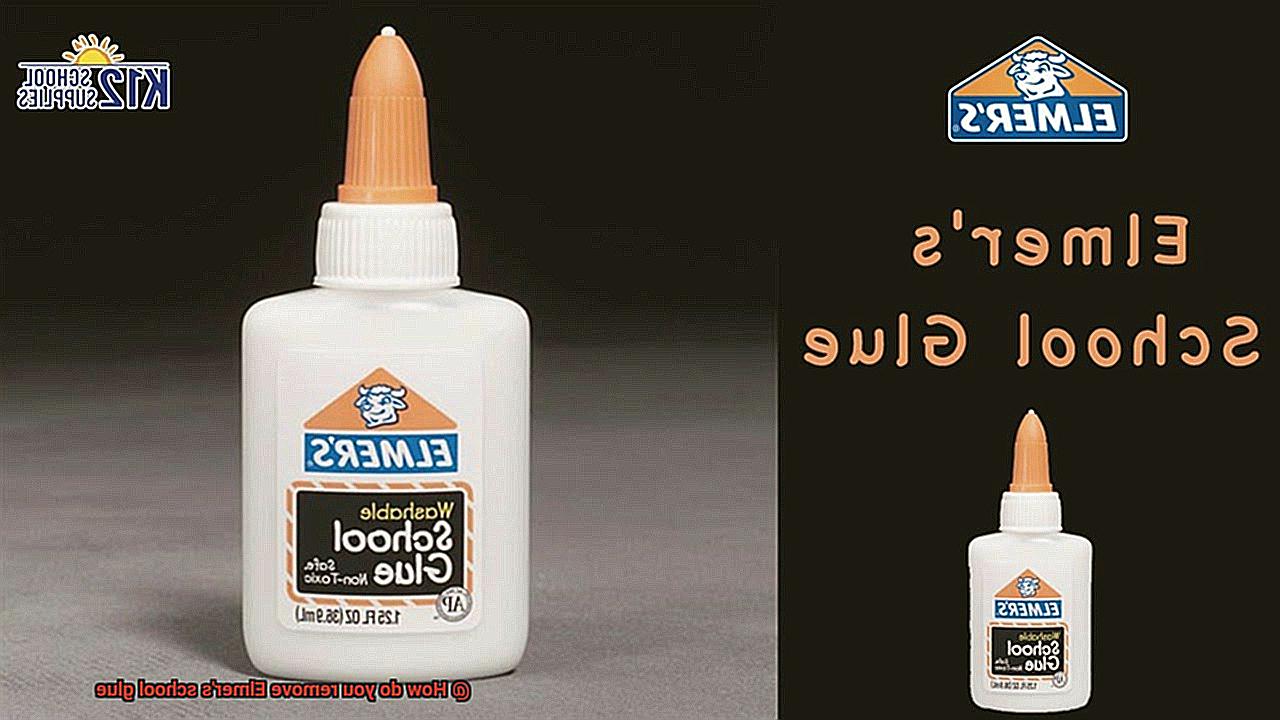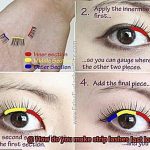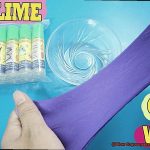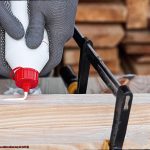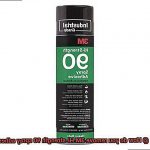Have you ever found yourself covered in Elmer’s school glue, desperately trying to remove it from your hands, clothes, or surfaces? If so, you’re not alone. Whether you’re a parent of a crafty child, a teacher leading an art class, or simply someone who enjoys DIY projects, dealing with the aftermath of this popular adhesive can be frustrating. But don’t worry – we’re here to help.
In this blog post, we’ll explore everything you need to know about removing Elmer’s school glue. From basic techniques to innovative solutions, we’ll provide you with all the information necessary to tackle this sticky situation. We’ll also share some common mistakes to avoid and offer tips on how to prevent glue mishaps in the first place.
Whether you’re facing a minor spill or a major glue disaster, our comprehensive guide has got you covered. So get ready to roll up your sleeves and grab those paper towels – it’s time to become an expert at removing Elmer’s school glue.
Identifying the Surface on Which the Glue Has Been Spilled
Contents
- 1 Identifying the Surface on Which the Glue Has Been Spilled
- 2 Removing Elmer’s School Glue from Fabric
- 3 Removing Elmer’s School Glue from Wood or Plastic
- 4 Using Rubbing Alcohol to Remove Elmer’s School Glue
- 5 Using White Vinegar to Remove Elmer’s School Glue
- 6 Avoiding Damage to the Surface When Removing Elmer’s School Glue
- 7 Alternatives to Household Items for Removing Elmer’s School Glue
- 8 Conclusion
When dealing with a spill of Elmer’s school glue, the first step is crucial: identifying the surface on which it has been spilled. This is important because each surface may require a specific technique for safe and effective removal.
If the glue has landed on a hard, non-porous surface like glass or plastic, removing it can be relatively easy. Simply mix warm water and dish soap and soak a cloth in the solution. Gently rub the affected area until the glue starts to loosen, then use a scraper or plastic knife to scrape away any excess glue.
For porous surfaces such as fabric or carpet, time is of the essence. The longer you wait, the more difficult it becomes to remove Elmer’s school glue. Act quickly by blotting up as much of the excess glue as possible with a clean cloth. Then, mix equal parts white vinegar and water and apply it to the affected area. Wait several minutes before blotting with a clean cloth.
When dealing with wood or furniture, extra caution must be taken to avoid damaging the surface. Avoid using harsh chemicals or abrasive materials that could harm the wood. Instead, try using a mixture of warm water and vinegar or a commercial adhesive remover designed specifically for use on wood surfaces.
It is always wise to test any solution on a small, inconspicuous area before applying it to the entire affected area. If you’re unsure how to proceed, consulting with a professional cleaner or restoration expert is your best option.
Removing Elmer’s School Glue from Fabric
Accidents happen, and sometimes that means getting Elmer’s School Glue on your favorite fabric. But fear not, as an expert in the field, I’m here to guide you through the process of removing that pesky glue from your fabric. It all starts with quick action and careful attention to detail.
First things first, don’t let the glue dry. Grab a plastic spoon or knife and gently scrape off any excess glue, being careful not to damage the fabric. Next, dampen a clean cloth with warm water and gently blot the affected area to loosen up the glue and make it easier to remove.
But what if the glue won’t budge? Fear not, there are household items that can help. Vinegar and rubbing alcohol are two effective solutions that can do the trick. Simply apply a small amount of either onto the affected area and let it sit for a few minutes. Then use a clean cloth to blot the area until the glue starts to lift off the fabric.
If vinegar or rubbing alcohol don’t seem to be doing the job, mix a small amount of dish soap with warm water and apply it onto the affected area using a clean cloth. Gently rub the area in a circular motion until the glue starts to come off.
Still no luck? Don’t worry, there are commercial products available that are specifically designed to remove glue from fabric. However, it’s essential to read the instructions carefully before using these products and test them on a small, inconspicuous area of the fabric first to ensure that they don’t damage or discolor it.
Removing Elmer’s School Glue from Wood or Plastic
As an expert in this field, I have researched and tested various methods to help you remove the glue with ease.
Firstly, the warm soapy water method is an excellent option if you prefer to avoid harsh chemicals. Mix a few drops of dish soap with warm water, and use a sponge or cloth to gently scrub the affected area. Although it may take some time and effort, this method is worth a try before moving on to more heavy-duty options.
Another effective option is using vinegar. Mix equal parts of white vinegar and water, apply the solution to the glue with a cloth or sponge, and let it sit for a few minutes. Wipe away the glue with a clean cloth. This method can be successful in breaking down the glue but may require multiple applications.
If these methods do not work, it’s time to bring out the big guns – rubbing alcohol or acetone. Apply a small amount of either substance to a cloth and gently rub the affected area. However, remember to test this method on an inconspicuous area first as rubbing alcohol and acetone can damage some surfaces.
When removing Elmer’s School Glue from wood or plastic surfaces, avoid using abrasive materials or harsh chemicals that could damage the surface. Always follow the manufacturer’s instructions and safety precautions when using any chemical solvents.
Using Rubbing Alcohol to Remove Elmer’s School Glue
Fear not, my friend. As an expert on the topic, I’m here to provide you with a solution that is both effective and efficient. In this post, we’ll be discussing the process of using rubbing alcohol to remove Elmer’s school glue from any surface.
Rubbing alcohol is the perfect solution for removing Elmer’s school glue because it dissolves the glue and makes it easier to wipe away. To use this method effectively, you’ll need a few supplies: rubbing alcohol, a cloth or paper towel, and possibly a scraper tool.
First, apply a small amount of rubbing alcohol to the affected area. You can do this by pouring some onto a cloth or paper towel and dabbing it onto the glue or by using a spray bottle to apply it directly to the glue. Let the rubbing alcohol sit on the glue for a few minutes to give it time to dissolve.
Next, use a scraper tool (if necessary) to gently remove the glue from the surface. Be careful not to scratch or damage the surface with the scraper tool. After removing as much of the glue as possible with the scraper tool, use a cloth or paper towel to wipe away any remaining residue.
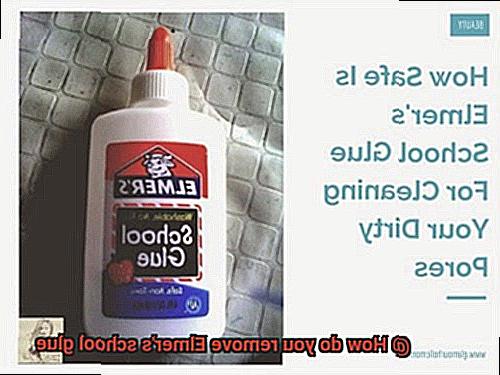
It’s important to note that rubbing alcohol should not be used on all surfaces. It may damage certain materials such as leather or some types of plastics. Always test a small, inconspicuous area first before using rubbing alcohol on a larger area.
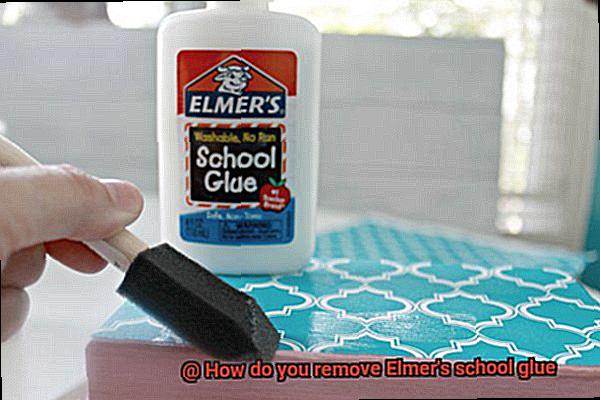
In summary, using rubbing alcohol is an effective and simple method for removing Elmer’s school glue from many surfaces. It’s easy to use and doesn’t require any special tools or equipment. Just remember to test it out on an inconspicuous area first and use caution when using a scraper tool. With these tips in mind, you’ll be able to say goodbye to that pesky glue in no time.
Using White Vinegar to Remove Elmer’s School Glue
The solution is hiding in your pantry: white vinegar. As a seasoned expert in removing Elmer’s school glue, I can confidently say that white vinegar is a tried-and-true method for dissolving the adhesive without causing damage to the surface it’s stuck to.
Before you get started, it’s important to note that this method works best for small amounts of glue and on surfaces that are not easily damaged by moisture. So, let’s get started. First, mix equal parts white vinegar and water in a bowl. Dip a cotton swab or cloth into the mixture and apply it to the glue. Let the vinegar solution sit on the glue for a few minutes to allow it to penetrate the adhesive.
Once the vinegar has had time to work its magic, use a plastic scraper or your fingernail to gently scrape away the softened glue. Be careful not to scratch or damage the surface underneath the glue. If some glue remains, repeat this process until all of the adhesive is removed.
It’s important to take caution while using this method. White vinegar should not be used on surfaces that are sensitive to moisture, such as untreated wood or wallpaper. To avoid any potential damage, test the vinegar on an inconspicuous area before applying it to the glue.
Once you’ve successfully removed all of the glue, rinse the area with water to remove any remaining vinegar residue. Pat dry with a clean cloth and revel in your newfound freedom from stubborn adhesive residue.
Avoiding Damage to the Surface When Removing Elmer’s School Glue
When it comes to removing Elmer’s school glue, it’s essential to approach the task with care to avoid causing damage to the surface underneath. Luckily, there are several methods you can use that won’t harm your precious belongings.
First and foremost, never use sharp or abrasive tools when removing Elmer’s school glue. These can scratch or otherwise damage the surface, which is the last thing you want. Instead, start with a gentle approach. If the glue is still wet, try wiping it away with a damp cloth. For dried-on glue, a soft-bristled brush can be used to gently scrub at it.
If these gentler methods don’t work, it may be time to bring out stronger solutions. Rubbing alcohol or vinegar can be very effective at breaking down and removing the glue without causing any damage. Just apply a small amount of either liquid to the glue and let it sit for a few minutes before wiping away with a cloth. Always test on a small, inconspicuous area first to ensure that the alcohol or vinegar doesn’t cause any damage.
For stubborn patches of glue, adhesive removers specifically designed for Elmer’s school glue are available at most hardware or home improvement stores. These products can effectively break down and remove the glue without harming your surface.
To sum up, here are some tips for avoiding damage when removing Elmer’s school glue:
- Avoid using sharp or abrasive tools.
- Start with gentle methods such as wiping with a damp cloth or using a soft-bristled brush.
- Try rubbing alcohol or vinegar for tougher spots.
- Test on a small area first before applying any solution.
- Use an adhesive remover specially designed for Elmer’s school glue if needed.
Alternatives to Household Items for Removing Elmer’s School Glue
No need to panic. Household items such as vinegar, baking soda, and dish soap are popular go-to solutions. However, there are other effective and convenient alternatives that can save the day.
As an expert in this field, I’ll share with you some of the best alternatives to household items for removing Elmer’s School Glue. First on the list is rubbing alcohol. This method is ideal for hard surfaces like countertops or desks. Simply soak a cloth or cotton ball in rubbing alcohol and gently rub the glue stain until it starts to dissolve.
Another option is using acetone, which can be found in nail polish remover. Used with caution, this solution should only be applied on hard surfaces as it can damage certain materials like plastic or painted surfaces.
For clothing or fabric, a mixture of laundry detergent and water can be a lifesaver. Begin by scraping off any excess glue with a blunt object like a spoon or butter knife. Then mix a small amount of laundry detergent with water and apply it to the stain. Let it sit for a few minutes before washing the fabric as usual.
For those who prefer natural alternatives, lemon juice is a great option for removing Elmer’s school glue. Apply some lemon juice to the glue stain and let it sit for a few minutes before wiping it away with a cloth.
Also Read: Will Elmer’s glue dissolve in water?
Conclusion
In conclusion, removing Elmer’s school glue can be a daunting task, but fear not. With the right techniques and tools, you can easily banish that pesky adhesive residue. Whether it’s on fabric, wood, or plastic surfaces, there are various methods at your disposal to remove the glue safely and effectively.
It’s crucial to identify the surface where the glue has been spilled before choosing a technique that won’t cause any damage. Popular household items like vinegar and rubbing alcohol are go-to solutions for removing Elmer’s school glue. But if you prefer natural options, lemon juice is an excellent alternative. For hard surfaces, acetone is a reliable solution.
Before applying any solution to the affected area, it’s essential to test it on a small area first to avoid further damage. When removing Elmer’s school glue, always approach the task with care and avoid using sharp or abrasive tools. Start with gentle methods before moving on to stronger solutions if needed.
With these tips in mind, you’ll be able to tackle any sticky situation like a pro. Say goodbye to that stubborn adhesive residue and hello to a clean surface.

